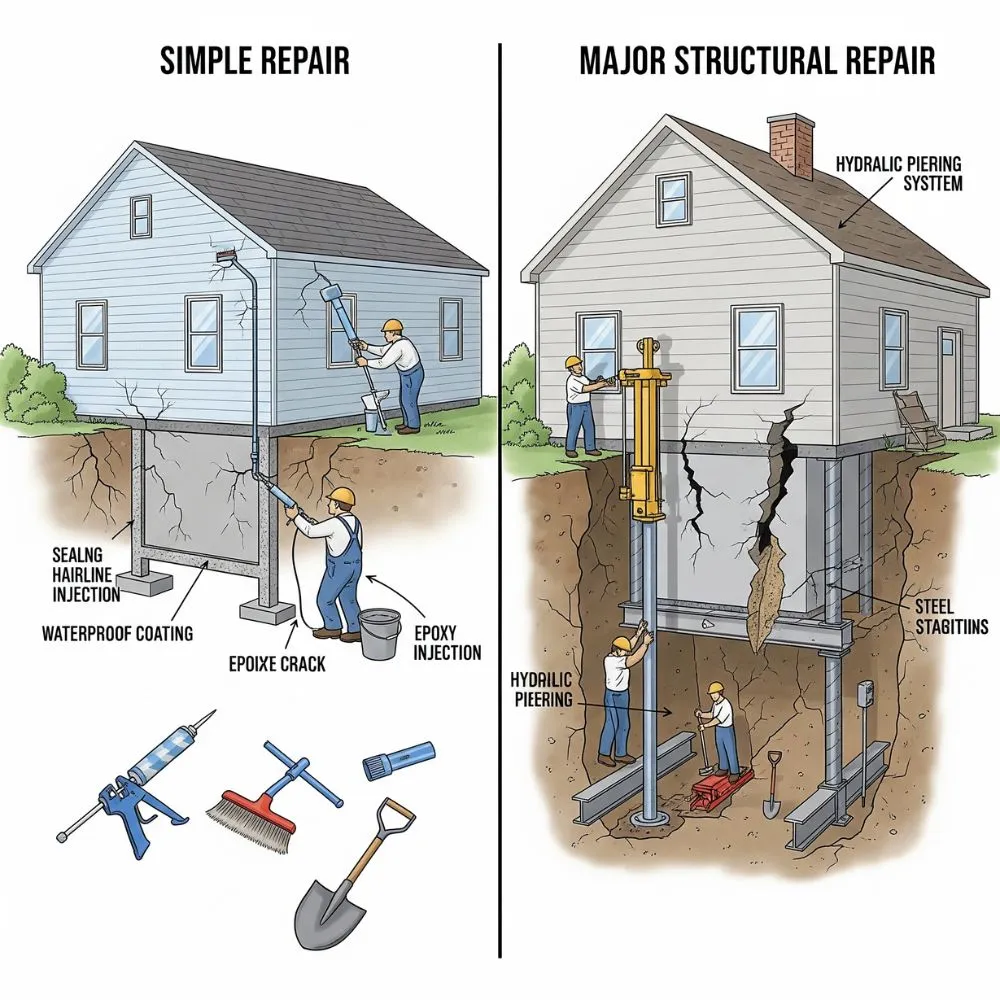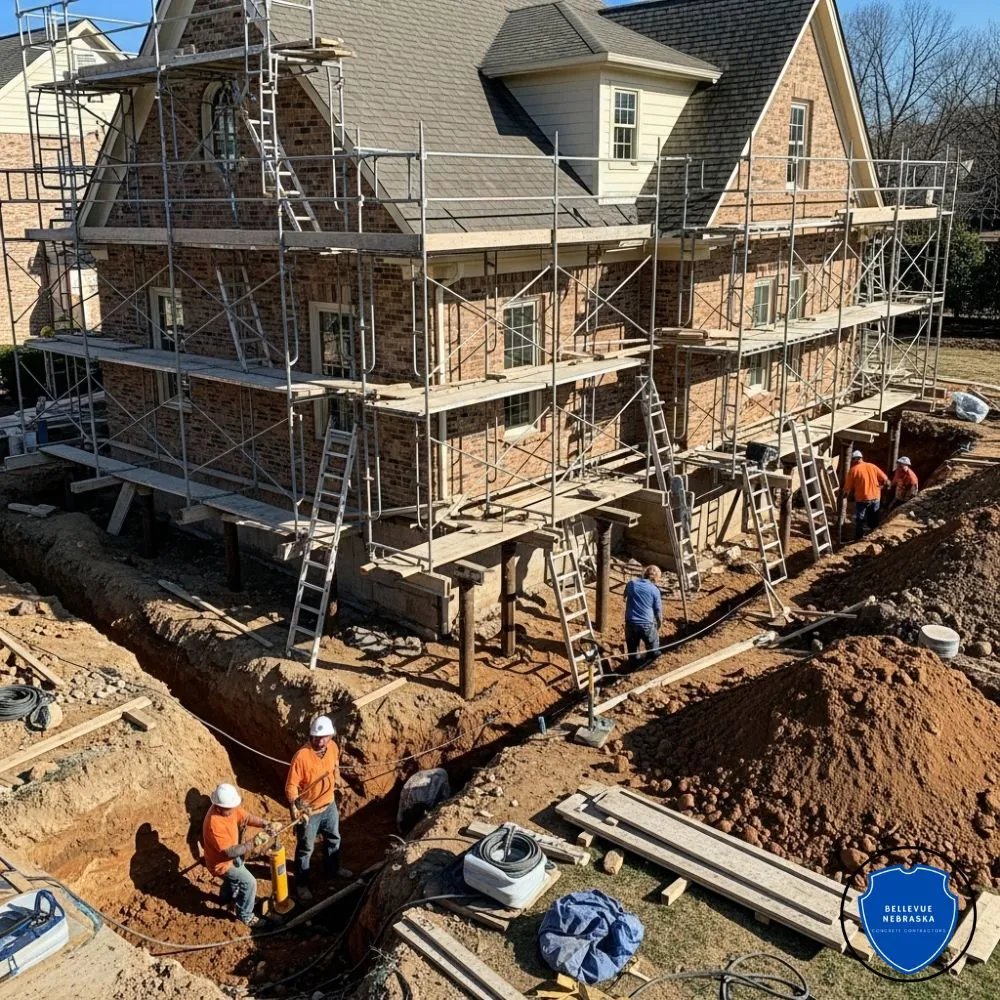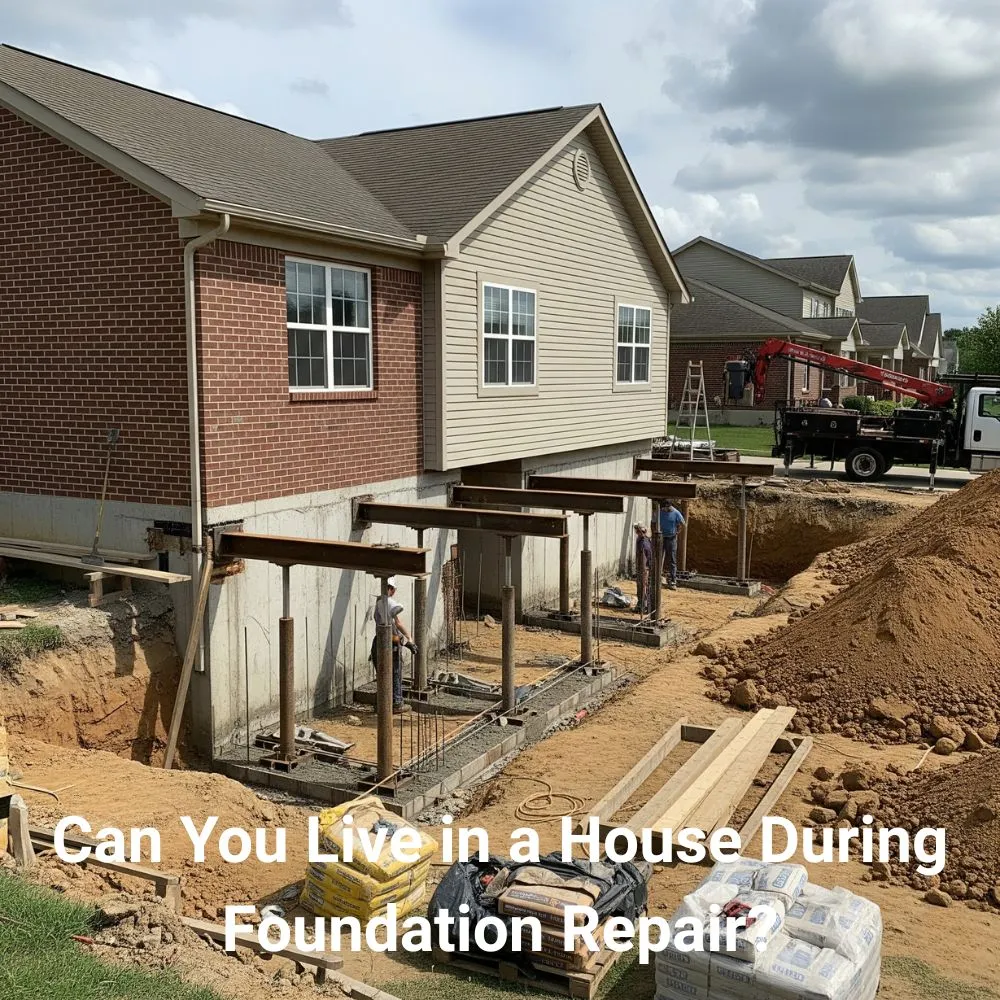If your home needs foundation repair, one of the first questions you might ask is – How long will this take? It’s a fair concern! Foundation work can disrupt your daily routine, and delays may lead to bigger problems.
So, how long does foundation repair take? Most foundation repairs take between 1 and 10 days to complete. Minor fixes may be done in a few hours, while major structural work can stretch over several days.
Every home is different, so keep reading to understand what affects repair time and how to plan.
Average Time for Different Foundation Repair Methods
The time needed for foundation repair depends on the method used. Here’s how long each common technique usually takes:
- Concrete Piers: Typically completed in 3 to 5 days for average residential projects.
- Steel Piers: Strong but fast—usually takes around 2 to 3 days to install.
- Helical Piers: Ideal for lighter loads, often done in just 1 to 2 days.
- Slab Jacking (Mudjacking): Takes about 1 day, depending on slab size and access.
- Epoxy Crack Injections: Quick and non-invasive—usually finished in 2 to 4 hours.
- Wall Anchors or Braces: Requires 1 to 3 days, depending on wall condition.
What Factors Affect How Long Foundation Repair Takes?
Many things can influence how long foundation repairs take. The type of foundation, damage severity, weather, and repair method all play a role in the timeline. Here are those aspects:
Type of Foundation
Different foundation types require different repair approaches. For example, slab foundations are usually easier and quicker to fix than crawl spaces or basements. Basement repairs may involve more steps, such as excavation or drainage work, which can extend the timeline. Knowing your foundation type helps set realistic expectations for how long repairs might take.
Severity of Damage
Minor cracks or settling can often be fixed in just a day or two. But if the damage is widespread—like bowed walls, sinking sections, or deep foundation movement—it may take a week or more. Severe damage often requires structural reinforcement, engineering evaluations, and more time for materials to set properly.
Weather Conditions
Foundation work often depends on dry, stable conditions. Heavy rain, snow, or freezing temperatures can delay outdoor repairs, especially when excavation is involved. Even indoor repairs may be postponed if water intrusion is present. Scheduling during a dry season can help reduce unexpected delays and speed up the process.
Repair Method Chosen
The repair method directly affects how long the project will last. Simple solutions like epoxy injections are fast. In contrast, pier installation, wall anchors, or slab replacement can take several days. Some methods also require time for curing, inspection, or follow-up work, which can stretch the timeline further.
Simple Repairs vs. Major Structural Work

Foundation repairs can range from quick fixes to large-scale projects. Here’s how simple repairs compare to major structural work in terms of effort, disruption, and time required:
| Type of Work | What It Involves | Typical Timeframe |
| Simple Repairs | Minor crack filling, sealing, or small adjustments. | A few hours to 1 day |
| Moderate Repairs | Wall bracing, slab leveling, and minor pier work. | 1 to 3 days |
| Major Structural Work | Deep foundation issues, excavation, and rebuilds. | 1 to 3 weeks or more |
Simple jobs are often non-invasive and require little prep or cleanup. They’re ideal when caught early. Major repairs, however, may require permits, structural assessments, heavy equipment, and a larger crew.
These projects are more disruptive and usually involve both interior and exterior work. Understanding the scope helps you budget time, money, and expectations.
Inside vs. Outside Repairs: Which Takes Longer?
The location of foundation work, inside or outside, affects both the time and complexity of the repair. In most cases, exterior repairs take longer because they include digging around the foundation, moving landscaping, and dealing with outdoor conditions. These repairs often need excavation equipment and permits, which add time.
Interior repairs, such as sealing cracks or installing wall braces, are usually faster and less invasive. They do not require digging and can often be done in finished spaces with limited disruption. Still, if flooring or drywall needs to be removed, the process can take longer.
Access is another key factor. If the damaged area is hard to reach, such as under a deck or inside a narrow crawl space, the work may slow down. This applies to both indoor and outdoor repairs. Ask your foundation contractor in Bellevue where the work will take place and how that location might impact the schedule.
When to Be Concerned About Delays
Some delays are normal during foundation repair, such as those caused by rain or shipping problems. Still, certain warning signs suggest serious issues that need attention. Watch for these red flags:
- Poor or inconsistent communication from the contractor
- Missed deadlines without a clear explanation
- Workers are not showing up on time
- Sudden costs or plan changes
- Long pauses with no visible progress
- Missing permits or skipped inspections
- Signs of rushed or incomplete work
- No written schedule provided
- Damage to your property with no solution offered
- Vague or unclear answers to your concerns
Conclusion
Foundation repair is a serious project, but it does not have to be overwhelming. With the right knowledge and a reliable contractor, you can avoid unnecessary delays and stay informed every step of the way. Most repairs take anywhere from a few hours to several days, depending on the problem and method used.
Taking time to understand the process helps you ask better questions, set clear expectations, and prepare your home and family. Keep lines of communication open with your repair team, and don’t hesitate to speak up if something feels off. A solid foundation takes time to restore, but your peace of mind is worth the wait.
Frequently Asked Questions
Can I stay in my home during foundation repair?
Yes, in most cases. Some major repairs may require you to vacate specific areas.
How soon can I use the repaired area?
Some methods allow immediate use. Others, like pier systems, may need a curing period.
Will the repair fix all future issues?
It addresses current problems, but future movement is possible if soil or drainage issues persist.
What time of year is best for foundation repair?
Dry seasons, such as late spring or early fall, are ideal for avoiding weather delays.



